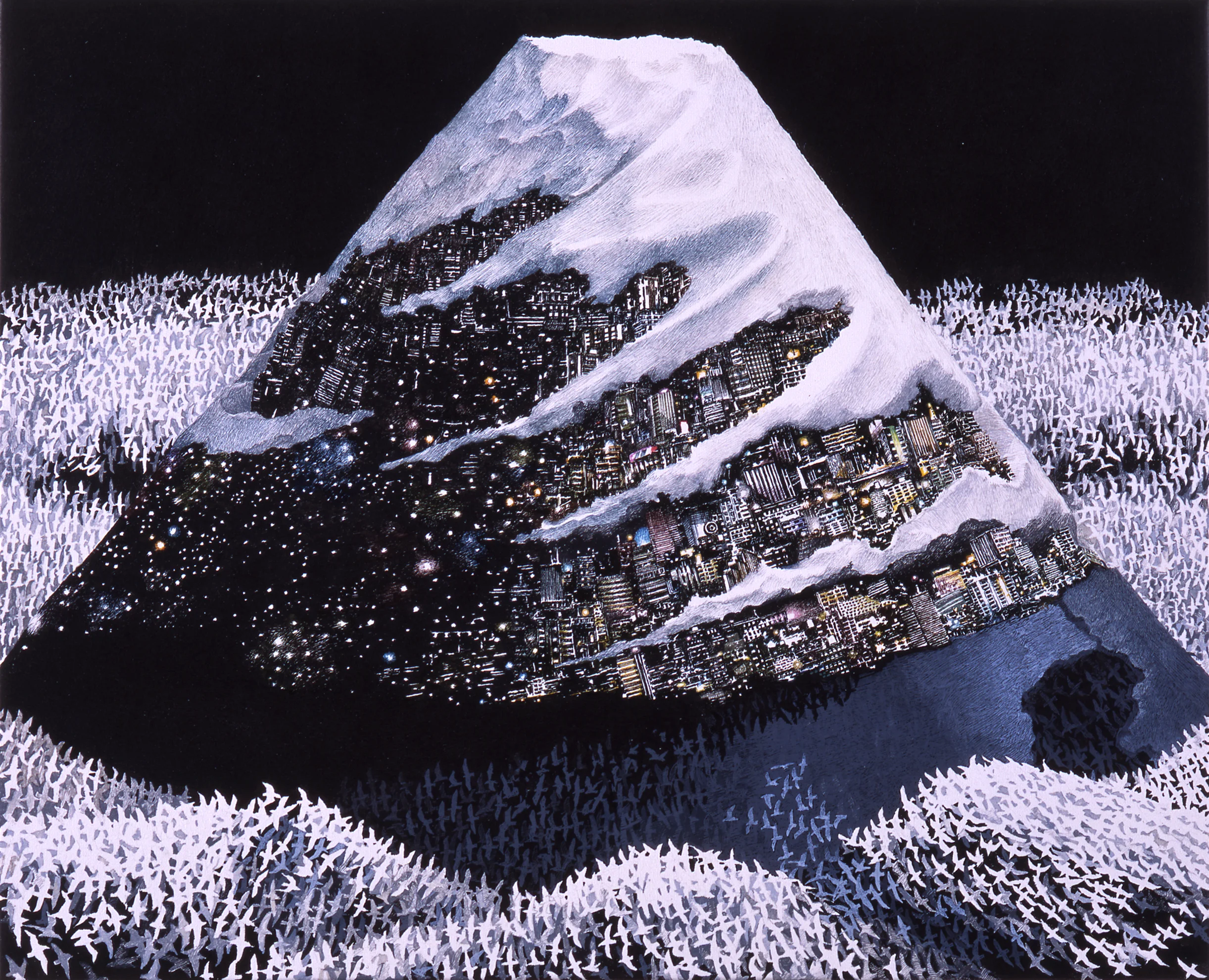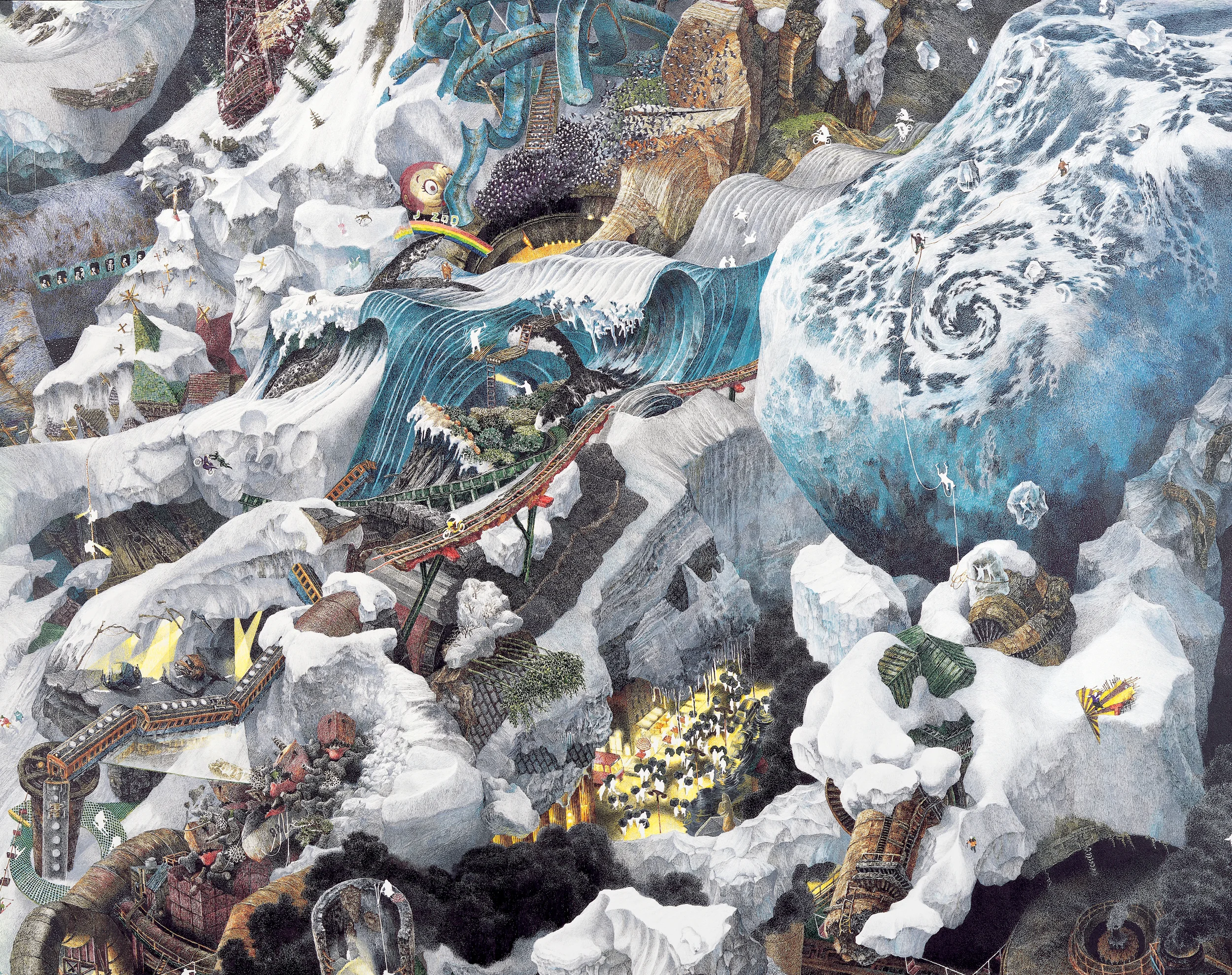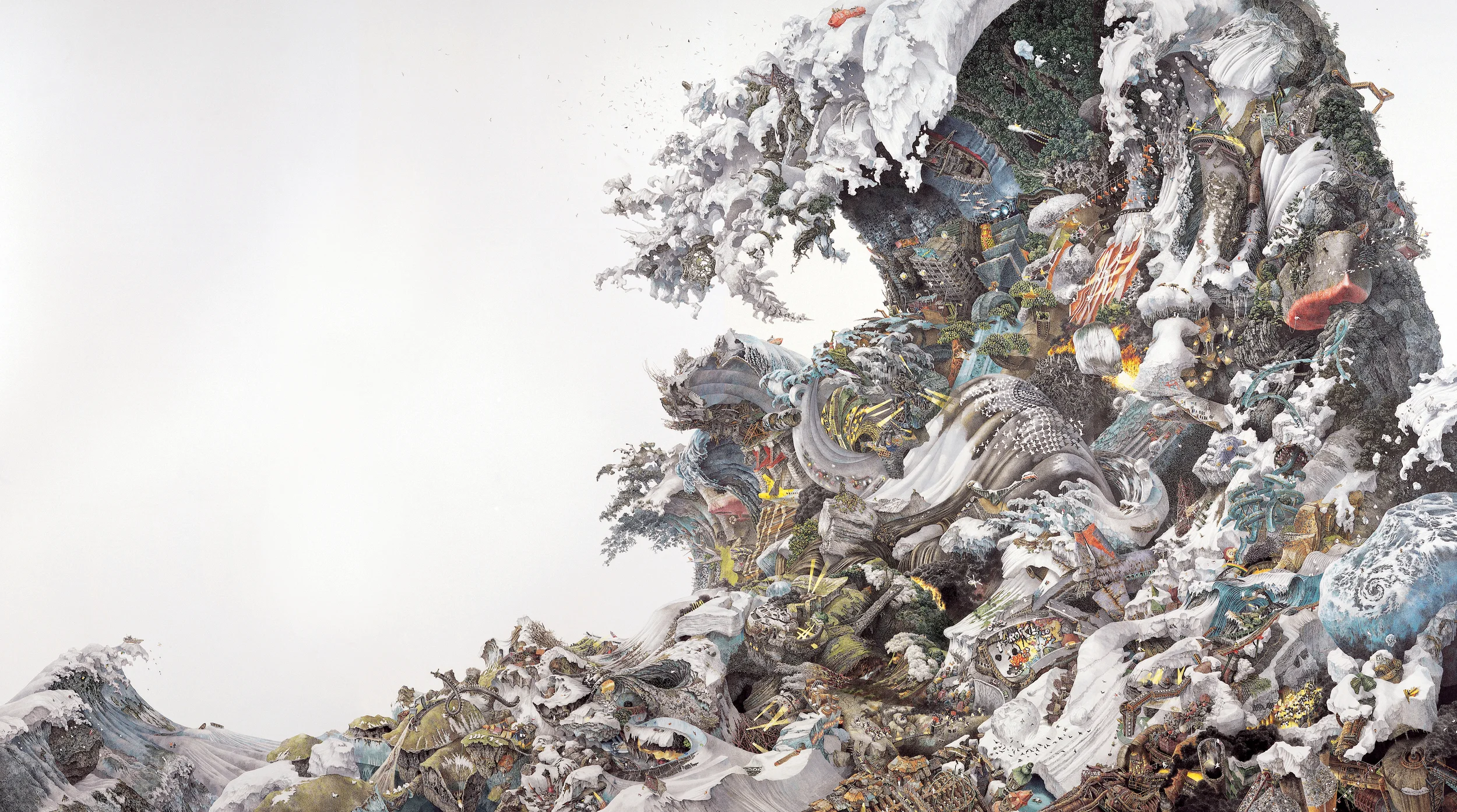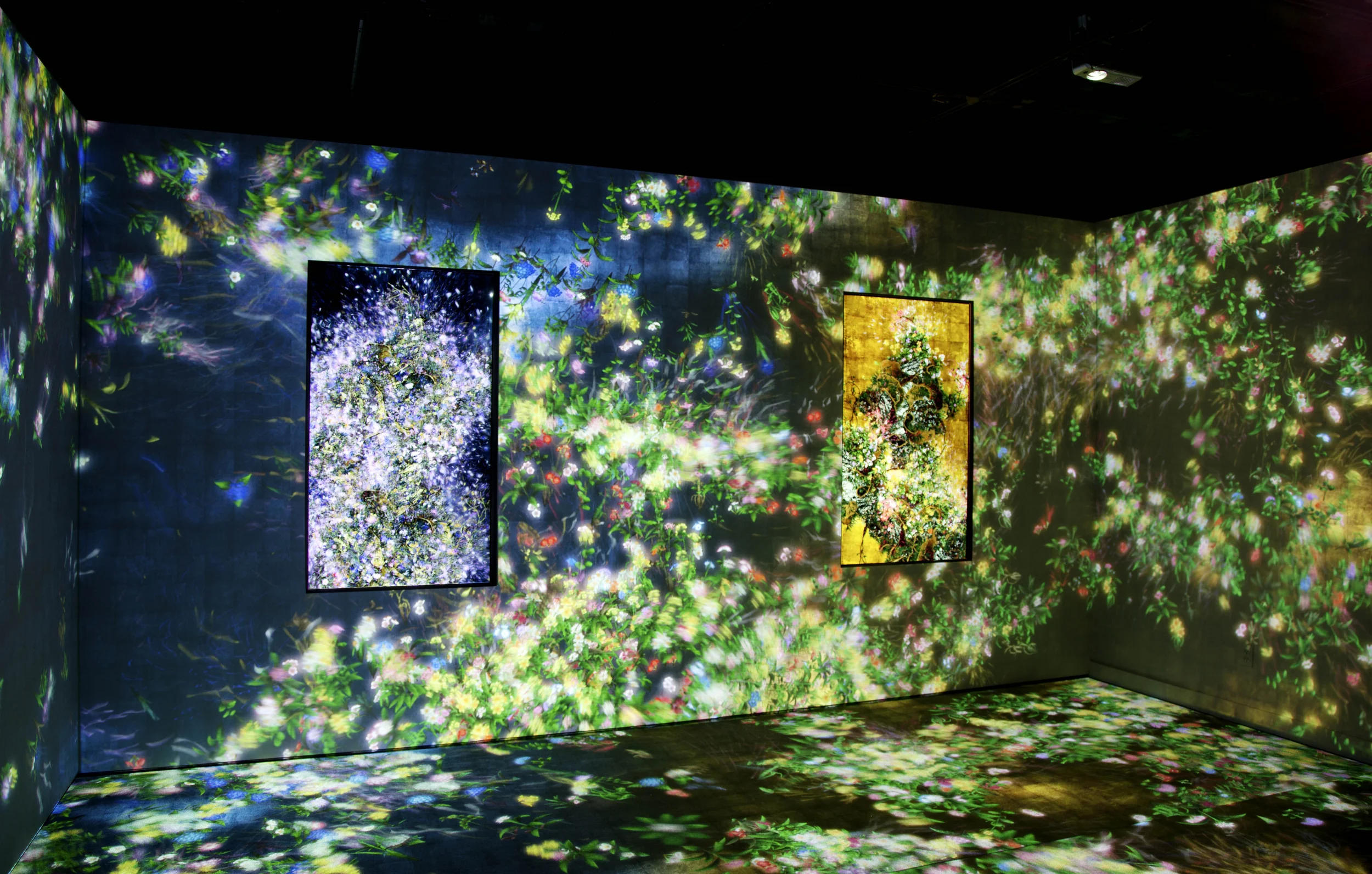Rikumo Field Trip: The Japan Society
We recently took the evening off to visit the Japan Society’s newest exhibit, Garden of Unearthly Delights. From Ukiyo-e prints to anime sequencing, the exhibit invites viewers to draw comparisons between traditional and contemporary Japanese aesthetics through the works of artists Manabu Ikeda, Hisashi Tenmyouya, and teamLab. In their approach to craftsmanship and technical precision, these artists have aligned themselves with the Japanese tradition of the master craftsmen or takumi.
Manabu Ikeda
Manabu Ikeda documents the seemingly adversarial relationship between society and the natural world. Futuristic cityscapes, natural disasters, industrialization, and climate change all serve as fodder for Ikeda's meticulous drawings. Using fine point pens, inks and acrylic pigments, Ikeda can take anywhere from 6 months to several years to complete a single piece. Influenced by Japanese references such as manga sequencing and reading right-to-left, Ikeda's work has a right-to-left momentum that often unfolds as in frames. Foretoken is often compared to Hokusai's Great Wave for its similar composition and depiction of nature.
Hisashi Tenmyouya, (b. 1966), Rhyme, 2012. Acrylic paint, gold leaf on wood; inkjet print on paper, mounted on wood; each 49 7/8 x 118 1/8 in. Chazen Museum of Art, University of Wisconsin-Madison, Colonel Rex W. & Maxine Schuster Radsch Endowment Fund purchase, 2013.23.1-.2a-b. Fiberglass reinforced polyester, calcium carbonate; variable dimensions. Chazen Museum of Art, University of Wisconsin-Madison, John H. Van Vleck Endowment Fund purchase, 2013.23.3a-g. Installation photograph by Richard P. Goodbody.
Hisashi Tenmyouya
By both embracing and rebelling against tradition, Hisashi Tenmyouya has proven his sophisticated knowledge of Japanese art genres. Inspired by the Ryōan-ji temple’s famous rock garden in Kyoto, his zen garden installation substitutes crimson-colored calcium carbonate for sand and fiberglass-reinforced polyester skulls for rocks. Tenmyouya’s garden references the tragedies of Nagasaki, Hiroshima and the natural disasters of March 11, 2011. This zen garden is just one component of Rhyme, an installation including a diptych. Informed by a traditional Japanese-style painting technique (Nihonga) and samurai culture, Tenmyouya is interested in cultivating a basura or outlaw culture of Japanese art that relies on tropes outside of common notions of Japanese culture such as wabi sabi and minimalism.
Hisashi Tenmyouya, (b. 1966), Rhyme, 2012. Acrylic paint, gold leaf on wood; inkjet print on paper, mounted on wood; each 49 7/8 x 118 1/8 in. Chazen Museum of Art, University of Wisconsin-Madison, Colonel Rex W. & Maxine Schuster Radsch Endowment Fund purchase, 2013.23.1-.2a-b. Fiberglass reinforced polyester, calcium carbonate; variable dimensions. Chazen Museum of Art, University of Wisconsin-Madison, John H. Van Vleck Endowment Fund purchase, 2013.23.3a-g.
teamLab
teamLab, a design collective comprised of over 350 members, was initially founded by just five graduates of the renown Tokyo University. With backgrounds in art, computer engineering, architecture, mathematics and more, this eclectic group has joined forces to create sophisticated digital media works that are displayed on high definition monitors. teamLab takes advantage of the participatory possibilities technology offers by focusing primarily on interactive art. We were delighted when we encountered United, Fragmented, Repeated and Impermanent World, as we watched the panels shift and mirror our body language. This statement piece was inspired by an 18th century painting by Japanese artist Itō Jakuchū. Working in a grid of tens of thousands of tiles, Jakuchū's unique painting approach in many ways predicted the way pixelated art functions. In combining animation with traditional Japanese spatial logic, teamLab explores the imaginative potential of a "flat," digital space.
teamLab (est. 2001), Flowers and People—Gold and Dark, 2014. Digital work. Endless. Courtesy of the artist and Pace Gallery. Surrounding (from left to right) Ever Blossoming Life—Dark, 2014, and Ever Blossoming Life—Gold, 2014, both digital works, endless, courtesy of the artist and Pace Gallery. Installation photo by Richard P. Goodbody.
Many thanks to the Japan Society for sharing images of the exhibit with us! You can check out the works until January 11, 2015. For more information, check in with the Japan Society at 333 East 47th Street, (212) 832-1155, and japansociety.org.
WORDS BY ELLIOT WALTERS








